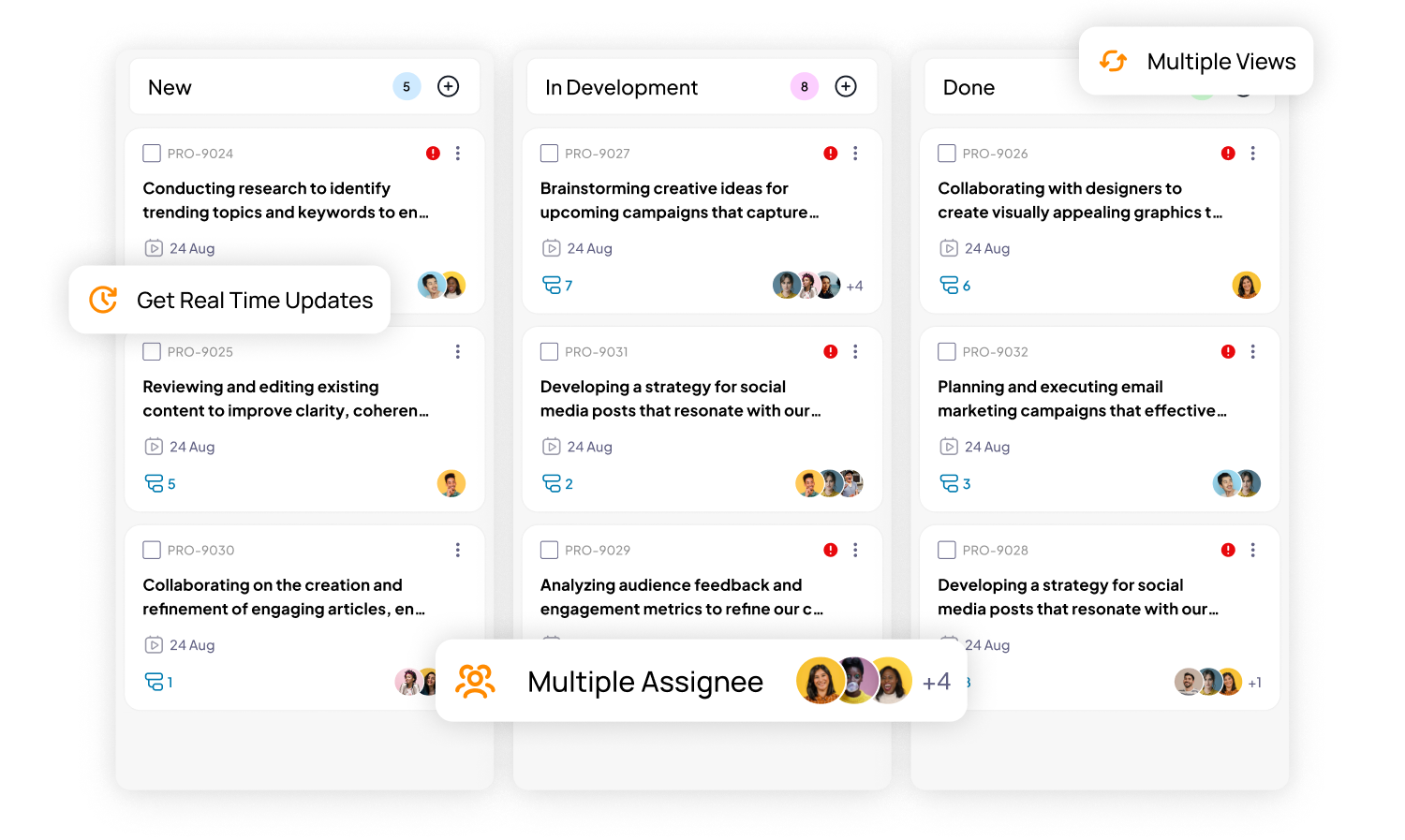Often used in the context of software development, an agile project management framework is a great way to make constant improvements in the strategy for all teams. It is a dynamic method that allows teams to pivot tactics as per the conditions.
If you are new in the project management space and not completely familiar with this strategy, then this blog is for you. We will dive into what agile project management is, the 4 pillars of agile management, and its 12 principles. Let’s get into it.
What is agile project management?
In simple terms, agile project management is a non-linear strategy that focuses on making large projects more approachable. Projects with a big scope and complex tasks are divided into smaller, more manageable chunks under this strategy.
These chunks are completed in a cycle called sprints, where the team looks back on the work of the last sprint and make changes accordingly. As the name suggests, agile methodology focuses on supporting teams to quickly change direction and focus on issues at hand.
Example of agile project management
Suppose a digital agency is developing a new website for their new client. In the span of one iteration or sprint, their team would:
- Collect requirements from the clients
- Write a website brief
- Design and develop the website
- Complete testing
This is done by reviewing each iteration with respect to the progress as well as adjusting the plan accordingly, such as adding/removing features, making changes in design, new blocks for content, etc. After each sprint, they can proceed to the next sprint. This process goes on till the project is ready to deliver.
Top agile project management methodologies
Some of the most popular methods used in agile include scrum, kanban, and lean. Below is the list of top agile project management methodologies:
Kanban
Kanban is an agile method that provides a visual perspective. Online kanban board tools are used by teams to represent where specific tasks are in the process. Cards on a board represent tasks, and stages are represented in columns. As members of the team work through tasks, they move cards from the one column into the appropriate column representing the stage where the task is.
This can be used to identify roadblocks and provide a full visualization of the amount of work that is being done.
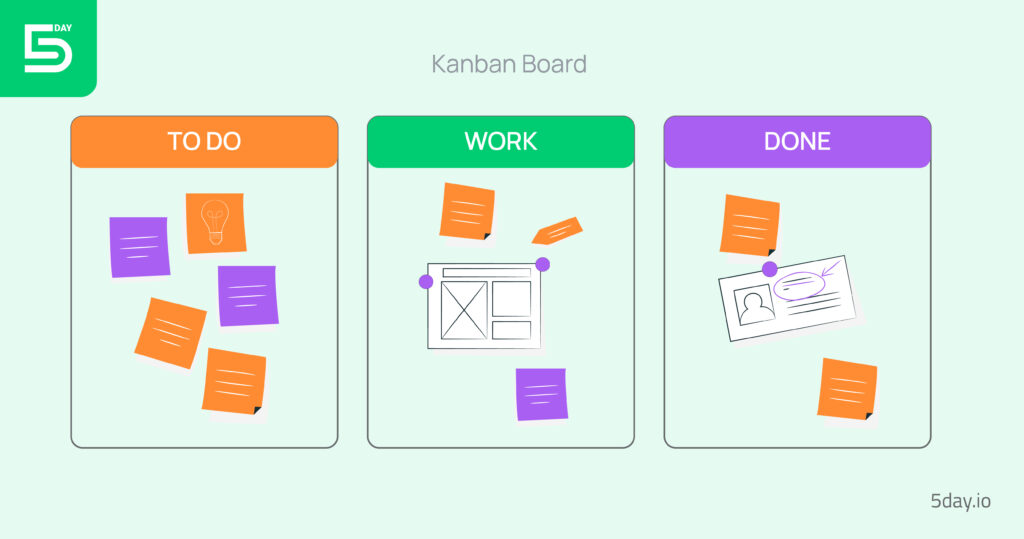
Scrum
Scrum is the most common methodologies under agile. In this process, the team is spearheaded by a scrum master whose main job is to unblock the team with their tasks that are executed daily.
Scrum teams meet regularly to discuss tasks that are active during the moment and everything that might block the team.
- Sprint planning: Sprint planning is a collaborative session in scrum where the scrum team plans the work on upcoming sprint. This is the beginning of a sprint. This specifies what can be delivered during that sprint.
- Sprint retrospective: Sprint retrospective is the meeting held at the end of every sprint. This is the recurring meeting for sprint review to discuss the learnings from previous sprint and streaming upcoming ones.

Extreme Programming (XP)
Extreme Programming or XP is an agile framework that was originally designed for software development purposes. It lists values that can enable teams to work together more effectively.
The five values in XP are
- Communication
- Simplicity
- Feedback
- Courage
- Respect
Similar to daily Scrum standups, XP includes regular releases and iterations, but it is much more technical in its approach. Technical focus makes it primarily well-suited for projects with high technical complexity or rapidly evolving requirements.

Adaptive Project Framework (APF)
Adaptive Project Framework is an agile framework that states that there can be unpredictable variables that might crop up at any given moment during the project. It is suitable for projects with high uncertainty,
This framework is based on the idea that projects are dynamic in nature. For example, there can be changes in terms of budget, timelines or team members who might have been shifted to other teams. APF focuses on those constraints that might occur in the project.
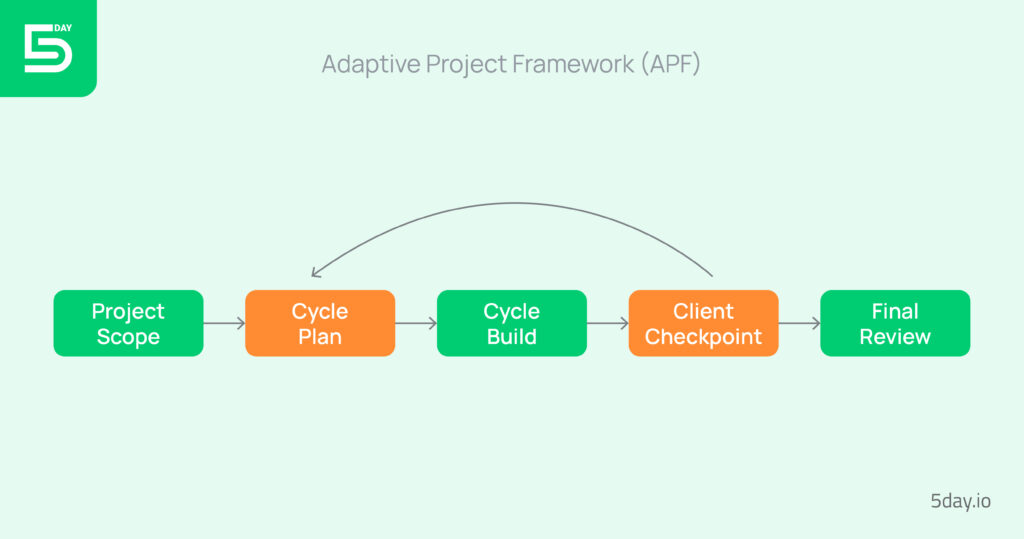
Extreme Project Management (XPM)
Extreme Project Management is another project management methodology that is designed for projects with high levels of uncertainty, rapid change, and complexity. This approach is particularly relevant where traditional project management methodologies, with their emphasis on fixed plans and expected outcomes are not effective. Continuous changing procedures are applied till it reaches the desired state. In such projects, there can be many spontaneous changes, and this becomes common for teams to change their strategy from one week to another.
XPM is flexible, short, and can go no more than couple of weeks. This methodology supports frequent changes, trial and error approach to solve problems.
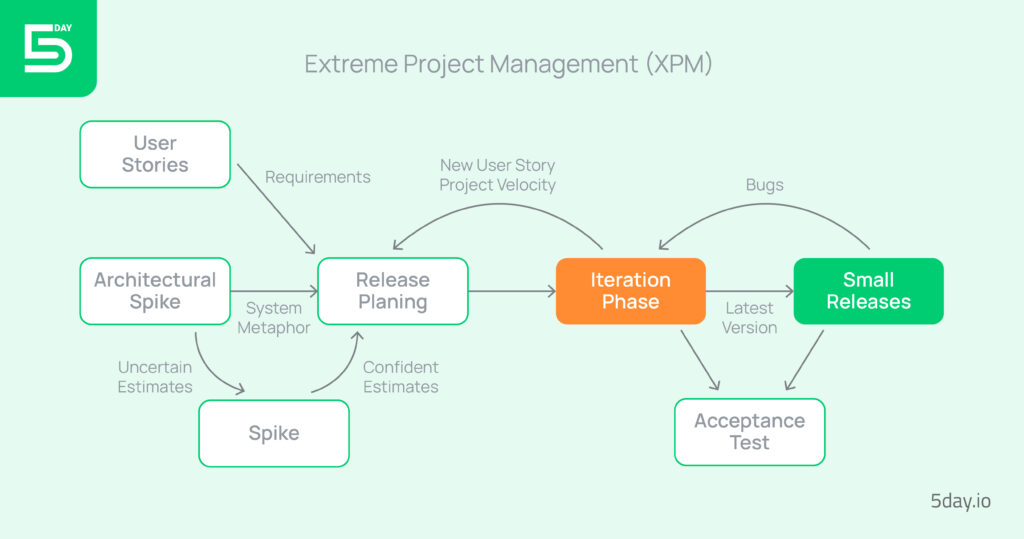
Adaptive Software Development (ASD)
This agile methodology enables teams to adapt instantly to any changes with respect to requirements. It focuses on learning and collaboration as a technique to build complex systems. This method is cyclical in nature comprising of phases – speculate, collaborate, and learn. It is designed for continuous learning, reevaluation, uncertainty, and collaboration among the team.
It is a non-linear style, and different stages that would overlap with each other. These three stages help teams to identify and resolve problems much faster than regular project management procedures.
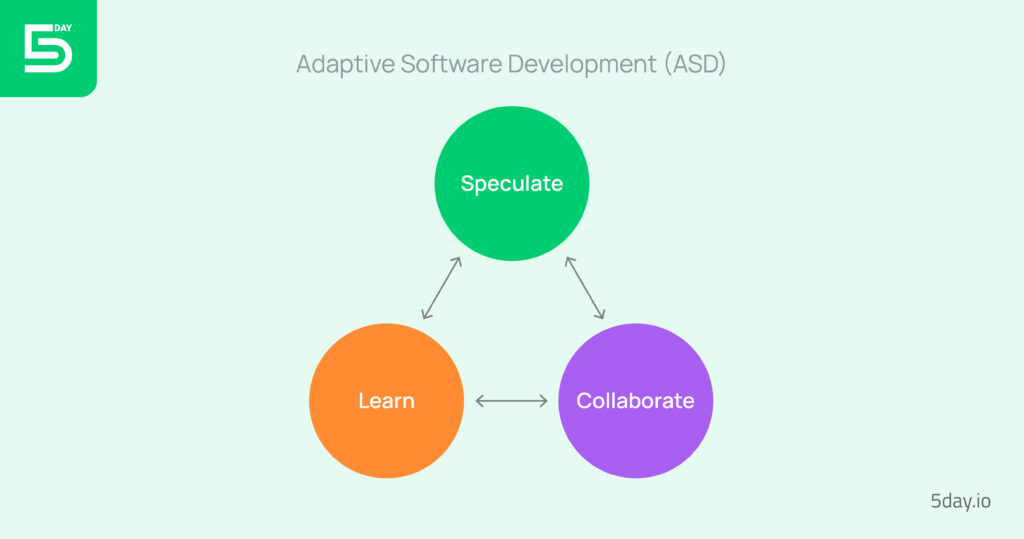
Dynamic Systems Development Method (DSDM)
The dynamic systems development method is an agile method that supports full project lifecycle. The methodology is very structured in DSDM.
DSDM consists of four basic phases.
- Feasibility and business study
- Prototype iteration or functional mode
- Design and implementation iteration
- Implementation
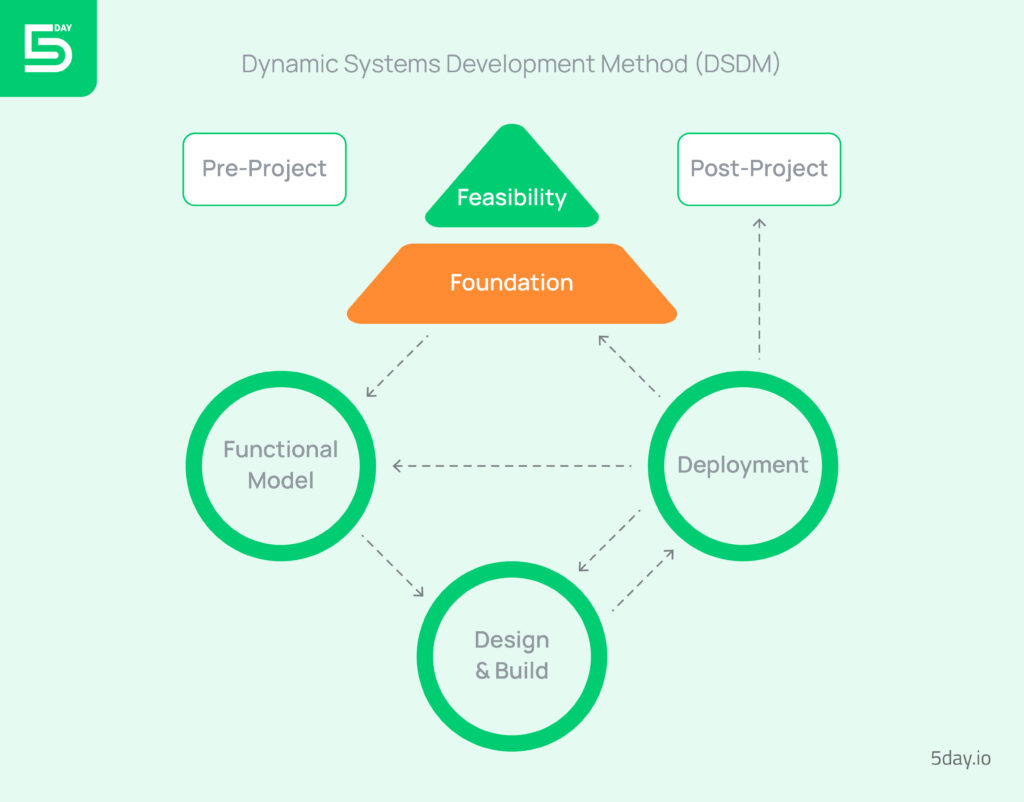
Feature driven development (FDD)
This model relies heavily on customer input since the priority of developments is based on the requirements of the customers. It allows teams to update projects frequently. In the event of an error, it is quick to cycle to implement a fix as the phases of this framework are constantly moving.
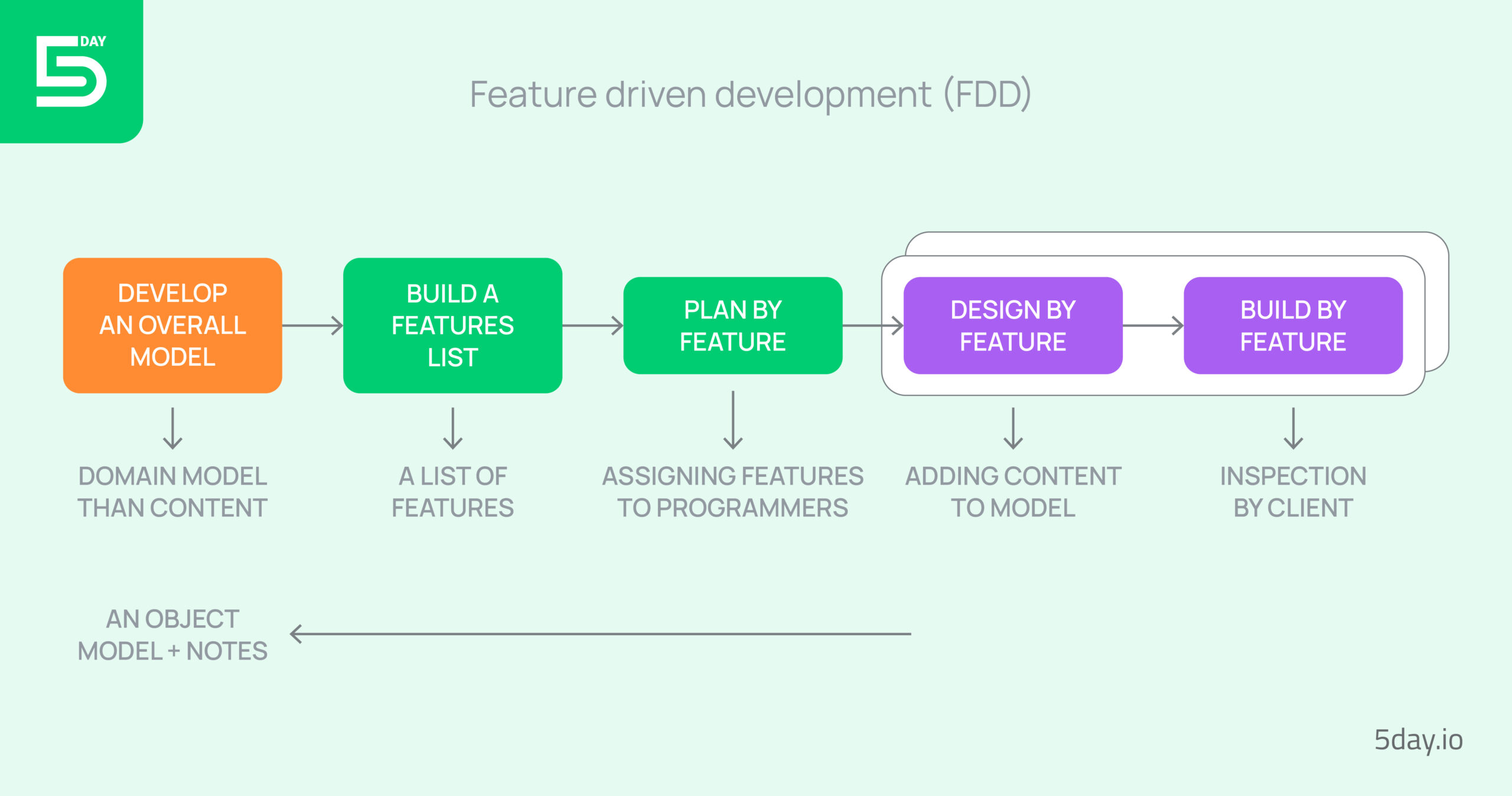
What are the 4 pillars of agile project management?
The Agile Manifesto developed 4 pillars of agile project management in 2001, which are focused on delivering value. These pillars are:
- Individuals and interactions over tools and processes
Individual and customer interaction should be at the center of work. Instead of always doing things in silos or strictly by the book, teams should focus on collaborations. Relying completely on processes and tools makes it difficult to change tactics.
- Working software over comprehensive documentation
While documentation is important, teams should first focus on developing a working software. It is all about giving teams the support to get their work done, instead of overworking them with documentation.
- Customer collaboration over contract negotiation
Customers are given a center stage in agile processes. Instead of having rigid product boundaries, the agile method shapes the end product as per the customers’ needs.
- Responding to change over following a plan
This is one of the biggest shifts that agile project management offers over other processes. Typically, change in a project is avoided and seen as an expense. But agile framework supports constant change as needed after reviewing each sprint. This way, teams get the flexibility to course correct without derailing their project.
12 principles of agile project management
The agile manifesto team derived 12 principles from the 4 values of agile project management. These principles can be effortlessly adapted to any team, as per their project needs. Let’s look at them below:
- Customer satisfaction is the team’s highest priority via early and continuous improvement and value delivery
- Changing requirements are always welcome, even in late-stage project development
- Up the delivery frequency on value
- Team members should work in collaboration and break silos
- Build the project around motivated individuals
- Convey information face-to-face for maximum effectiveness
- A working software is the primary measure of your progress
- Sustainability should be at the center of agile processes
- Constant excellence increases agility
- Simplicity in projects is paramount
- Self-organizing teams offer maximum value
- Regular reflection and adjustment boost effectiveness
Pros and cons of agile project management
Pros of agile methodology
Adopting an agile methodology approach will have several advantages in your organization, such as:
1. Fast completion
Since the agile methodology focuses on product placement, a team can deliver products to clients as fast as possible. However, products and development processes might not be optimal, the agile method allows the process to move through reactionary feedback.
2. Elasticity
As the increment in improvement between product delivery deadlines is small, projects are flexible and adaptable to new preferences or change requests. It enables production to continue at an acceptable rate with continuous improvements to the process.
3. Ease of collaboration
Agile requires a lot of feedback between the client and the employees, agile introduces a good system for collaboration for both customers and team. In this system, the team can learn how to collaborate with different stakeholders to produce a better product with each piece of feedback they receive.
4. Improved performance
The team tests product increments while building them and reacts to problems quickly that may arise. This nature of production and correction allows teams to understand and correct problems much better. After receiving feedback from clients and other team members, the teams could fix issues quickly before the next cycle of production.
5. Transparence
With the agile approach, both potential issues and process improvements are much more transparent for each production cycle. It allows teams to correct mistakes and act on their own, the time from when there is known improvement, and the implementation cycle is much shorter.
6. Continuous improvement
As this process is based on improvement of a process as it generates products, improvements can directly impact the next product. Since it is not batch production fixes, it encourages teams to act on feedback sooner than later.
7. Less preparation work
Agile methods focus on product than process improvement, it can produce a product faster than other methodologies. Accepting feedback and making changes over time rather than pausing production to make larger changes means products may improve to the desired state without any compromise. It requires less preparatory work before commencing selling products and thus saving between the planning and profit stages.
Cons of agile methodology:
Some of the cons, however, of implementing agile methodology style project management include:
1. Transfer problems
It may take some period for one to fully attune to a team’s shift in the new style since there are new responsibilities and ways of how projects progress within the framework. Leaders may find a bit of difficulties at the very beginning from the new style of management, though constant practice and training can adjust the shifting faster.
2. Multiple objectives
Due to the nature of the agile methodology that means tackling many goals in one wave at any stage of the project. Variable goals within a department lead to a lack of specific goals for the team, which might result in unknown deadlines and inaccurate costs.
3. Lack of documentation
In agile methodology, documentation is less of an issue than reactionary planning and progress. It will also make documentation process or responsibilities slow due to low importance in comparison to other tasks.
Agile project management challenges & solutions
Becoming an effective agile project team would require project managers to become champions of change to help their teams avoid common pitfalls. Below are some of the common challenges faced by agile teams:
- Introduction of the new processes / procedures.
- Communication with stakeholders and business owners clearly.
- Zero-effort waste in adapting to change in business requirements.
Challenge 1: Procedures / processes that hinder productivity.
Solution: Team can cooperate to overcome the immediate challenge and then work together to form new processes that meet everyone’s needs.
Challenge 2: Communicate to stakeholders and business owners
Solution: Involvement of stakeholders at all stages of the project.
Challenge 3: Adapting to the ever-changing requirements of business without wasting any efforts
Solution: Incrementally working in agile delivers small, functional projects regularly, adapting to changes. This minimizes waste by focusing on immediate needs and allowing adjustments based on feedback.
How to implement agile project management in projects
Here’s a step-by-step guide for Agile methodology process implementation:
Selecting appropriate agile framework
Your first step would be to choose the appropriate Agile framework for your team. Some of the most popular options:
- Scrum: Principle based project management
- Kanban: Visualization of workflows and processes
- Hybrid: Hybrid of Scrum and Kanban
- XP: customer-centric product development.
- APF: Versatile team
- Dynamic Systems Development Method (DSDM): Emphasizes the life cycle of software development.
The size of your team, specific requirements of the project, and the experience of your team in the various methodologies are the factors that are vital while choosing an agile framework.
Creating agile team
Unlike other teams, the agile team is different. To be successful in any of the agile methodologies, you need to have a clear role and responsibilities within your team and also a collaboration culture.
What are some of the responsibilities of an Agile team?
In the context of agile project management, the agile team achieves their highest output by taking the responsibility of organizing themselves and in liaison with other stakeholders.
Cross-functional collaboration
In addition to the self-organization need, agile also needs cross-functional collaboration. Agile teams have a need to share information across departments and work closely with multiple teams.
Iteration planning
In agile project management, iteration planning is detailing scope by a team for a particular sprint from the product backlog.
Planning the project
Now that you’ve selected one of the Agile methods and assembled your world class team, it’s time to plan out your project.
One of the key ingredients to successfully manage an agile project is planning. First, you need to define your project goals and scope. At this point, there might not be any unexpected setback, nor would it result in unmanageable sprints. (if using scrum).
You can also develop a product backlog during the planning phase. Backlog helps to give you priority levels to your tasks so that every member of the team knows what they will be working on.
Managing stakeholder expectations
All projects that are undertaken must first seek how such stakeholders feel about it and ensure their feedback has been included.
Depending on the degree of their interest in your project, they may want to be involved throughout the process or at least receive regular updates. Creating a feedback loop simplifies any uncertainty on the stakeholder end and allows you to change at any stage of the process.
Measuring Success
Measuring project success forms the key to meaningful progress in the implementation of agile methodology. Through studying what worked and didn’t, you can get key lessons in future agile projects. It has numerous ways to effectively measure progress and judge success.
- Daily standups: Short meetings to identify problems and come up with solutions
- Sprint reviews: Informal meetings to share work and solicit feedback from the team.
- Retrospectives: Reflections on past work to inspire and influence future progress
Conclusion
While popular among software development teams, agile project management can be adopted by any team including marketing, sales, product, finance, and HR. It is a method to provide flexibility to teams and amplify what works.
If you want to make the most out of your agile structure, use a work management tool like 5day.io, that lets you break down your processes to the smallest level. It’s time to make your work easier, more human.
FAQs
When to use agile project management?
Agile project management is best suited for ongoing projects or projects where certain details are known from the beginning. If a project doesn’t have fixed constraints, timelines or resources, that would be an ideal fit for agile methodology.
For example, building and launching a new product might incur unforeseen challenges or complexities. Having an agile approach means the project has methodology in place to test products as often as needed, iterate faster, and communicate changes with the stakeholders involved.
What are the differences between agile and waterfall methodologies?
Both agile and waterfall project management are ways to manage project. Each has its own pros and cons. Agile methodology is an iterative approach that emphasizes flexibility and collaboration among teams. It focuses on delivering small, incremental releases, continuous adaptation throughout the process.
While waterfall methodology is a linear and sequential approach. Here every phase must be completed before moving to the next progression. Changes are difficult to incorporate once a phase is completed.








